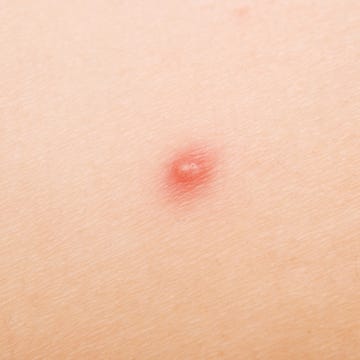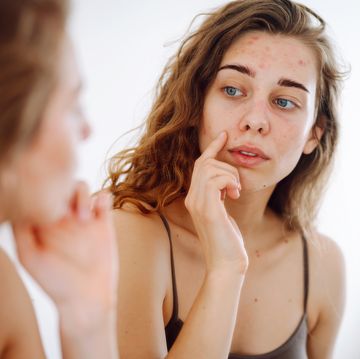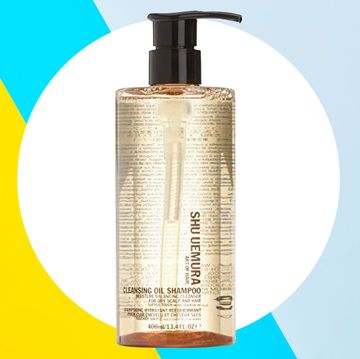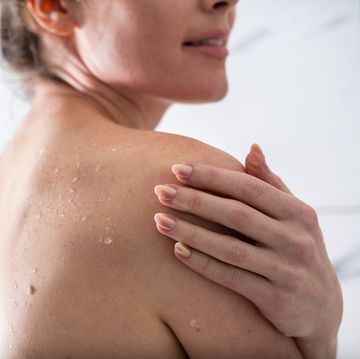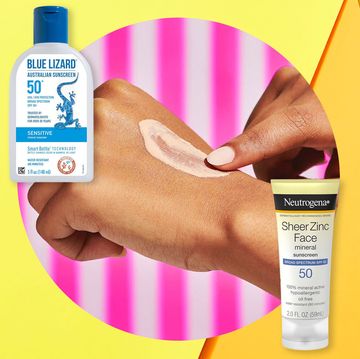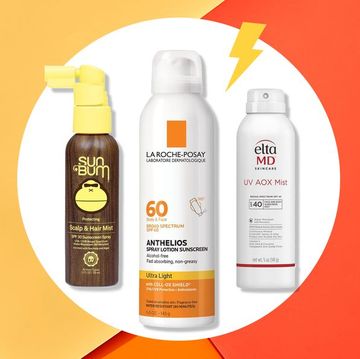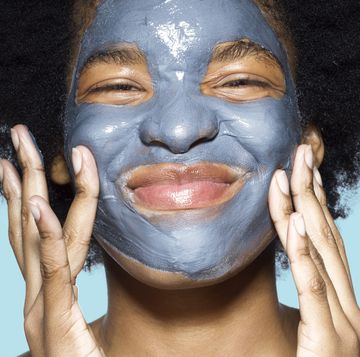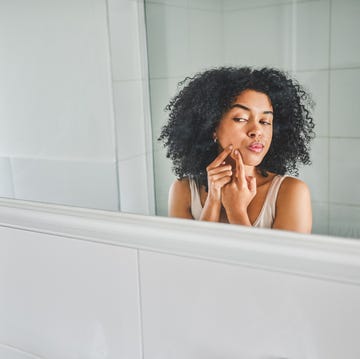No matter how many steps you use in your daily skincare routine, maintaining bright, dewy skin becomes more of a challenge as you age. That youthful, smooth, plump, and glowing skin doesn't stay that way forever in many cases, especially with decades of sun exposure. It also gets a whole lot more expensive to keep up with the products and treatments that may help sustain a healthy-looking complexion, too.
And, since there are so many skin conditions that seem to appear with age, it can be hard to detect exactly what is going on with your skin when things get out of whack. Of course, there are the typical concerns of fine lines and wrinkles, sagging skin, and loss of elasticity, but there's also a less commonly discussed skin issue: sallow skin. It's one of those skin concerns that can take over your complexion without you having any idea what's going on or how to fix it. Thankfully, WH tapped two dermatologists to get to the bottom of sallow skin, including what causes it, how to prevent it, and how to remedy it. Keep reading to learn the ins and outs of dealing with sallow skin.
What Is Sallow Skin?
If you’ve ever taken a glance in the mirror to find that your skin has a yellow or brown tint, you may be dealing with sallow skin. Basically, sallow skin happens when the natural complexion of your skin changes. “Sallow skin is a condition where the skin yellows or browns,” says board-certified dermatologist Dendy Engleman, MD. The process is called glycosylation, she explains. “As we age, chains of sugar molecules attach to skin proteins and over time cause a yellowish hue.” This typically occurs in lighter skin and is connected to aging and continual sun exposure.
In people with pale or pink skin, sallow skin appears more yellow, says Hadley King, M.D., a board-certified dermatologist based in New York City. For those with olive skin tones, sallow skin may appear brown. This condition is not commonly found in darker skin tones. In addition to the discoloration, sallow skin tends to be dry, flaky, and dull.
What Causes Sallow Skin?
Sallow skin can happen naturally due to aging, too much exposure to harmful UVA and UVB rays, and poor skincare habits. There are also a variety of health conditions that may cause sallow skin. One of the most common causes is anemia, Dr. Engelman says. According to the American Society of Hematology, iron-deficiency anemia causes a lack of oxygen circulation to the rest of the body, including the skin, and can result in a pale complexion or dull, sallow skin that appears yellowish or brownish.
Vitamin deficiency, smoking, and poor diet may also be likely culprits of sallow skin, adds Dr. Engelman. Other known factors include dehydration and stress. Or, sallow skin can be attributed to genetics in some cases (especially if anemia is in your genes).
Can Sallow Skin Be Prevented?
According to Dr. King, preventing sallow skin comes down to practicing good health habits, including proper diet, sleep, and adequate hydration. For starters, quitting smoking should be a no-brainer. It has no positive effect on your skin (or body) and will cause you to age a whole lot quicker.
Dr. Engelman suggests cleansing the skin daily and utilizing serums, eye creams, and moisturizers. Maintaining these healthy skin habits are the beginning steps of creating a solid skin care routine. Removing dirt, grime, and oil are essential for having bright, healthy skin. Dr. Engelman says that proper cleansing is so important that even if you only have five minutes, it should be your number-one priority.
Serums, eye creams and moisturizers (that work with your specific skin type, whether it's combination, oily, or dry) help to target specific skin concerns and lock in moisture as a shield of protection for the skin. “Even if the skin does not seem dry, it still needs a moisturizing layer of protection,” Dr. Engelman says. When you don't use moisturizer, it makes the skin barrier weaker and more vulnerable.
And most importantly, don’t skip sunscreen. No matter what the forecast is outside, if you’re going outdoors in any capacity, you need to slather on the SPF. “My main focus with sunscreen is to prevent sun damage that could turn into cancer or another fatal disease,” Dr. Engelman says. She recommends both chemical and physical sunscreens to ensure full protection. But even if you choose to opt for one over the other, the key is making sure to protect your complexion from harsh UVA and UVB rays.
Treatment Options for Sallow Skin
There are ways to remedy sallow skin, if you think you may be dealing with the skin condition. In addition to the steps above, Dr. Engelman suggests exfoliating regularly. “Exfoliation does wonders for hyperpigmentation,” she says. “Chemical exfoliants, like AHAs, BHAs, and PHAs, will help promote cellular turnover, removing scarred, discolored skin cells and revealing healthy ones.”
Dr. King agrees that exfoliation is key to reversing sallow skin, but she also recommends adding a retinoid to your evening skincare routine. Retinoids are powerhouses when it comes to addressing a slew of skincare concerns, including unclogging pores, reducing fine lines and wrinkles, and increases cell turnover to help correct discoloration of the skin. Dr. King also notes that if you’ve tried all of the above without seeing any positive results, you should consider calling your dermatologist for a proper solution.


